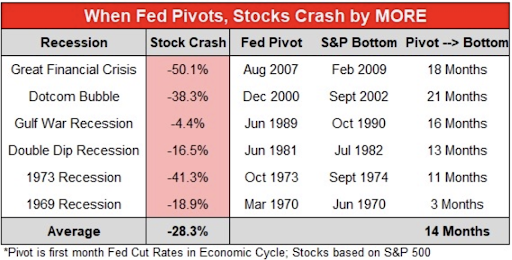The majority of traders who are just starting out tend to focus on entry methods the most…
If you don’t believe me, just go online or look at a few trading magazines. Articles and advertising for entry methods that produce a high-percentage of winners tend to be the most popular.
But having an effective exit strategy for stocks is just as important as your entry…
Why Effective Exit Strategies for Stocks Need Control
When traders first start out, they don’t perceive the stock market like pro traders do, especially when they’re first learning day trading methods.
Beginners often believe that with the right entry method, they will gain some control over the outcome of their actions…
If you think about this on a deeper level, you’ll find the only control traders have over their positions occurs at the time of entry.
That is to say once the position is entered and filled, the trader loses all control over it and you’re at the mercy of whatever the market decides to do.
So before entry, the trader had full control over everything… the position, the account and even the market.
Yes, you control what the market will do to you by avoiding market entry.
But from a pure psychological perspective, you can see how you give up all control when you pull the trigger and enter a position.
When traders look for entry strategies, they focus on the accuracy of the method and the risk-to-reward profile of the entry method.
This makes them feel in control over their trading account.
If they feel like they know how accurate the entry method will be, they can have even more control over the market.
Most of the time, this happens on a subconscious level and traders don’t even realize this is happening to their thought process, but it is.
So it’s important for traders to have an effective exit strategy for stocks in place.
Effective Exit Strategies for Stocks Are Key
I always ask traders how much time they spend thinking about an effective exit strategy for stocks compared to their entry…
The answer is usually 9 to 1.
Now, think about your personal experience and how much time you think about your exit strategy compared to your entry.
Most traders don’t spend nearly as much time thinking about their profit target compared to their entry strategy, but your profit target is responsible for how much money you make.
Same with your stop-loss strategy… It’s responsible for your risk and loss amount, but most trading books talk about it in passing or provide simple rules that don’t always work well in all situations.
Positive Expectancy
The key to achieving positive expectancy is to minimize your losses and maximize your winners — both of these elements have to do with having an effective exit strategy for stocks instead of your entry.
You minimize your losses by placing stop-loss orders that are effective without stopping you out too early.
You also maximize your winners by implementing a profit target or a trailing exit strategy. It allows the market to maximize its momentum without exiting too early and missing out on a strong and powerful move in your direction after your position has been liquidated.
The ATR Indicator
I recently wrote an article about using the average true range indicator to equalize or balance your positions.
The ATR indicator measures the daily or the intraday trading range based on the volatility of the stock, futures or forex contract you’re trading.
Even though the ATR indicator was created four decades ago, it remains one of the most solid indicators for measuring the current volatility.
What I like the most about the ATR indicator is how it adjusts dynamically as volatility changes bar by bar, or day to day, depending on your time frame.
This allows the market to tell us where to place stop-loss orders and profit targets instead of us imposing our will on the market.
Things to Keep in Mind
Trading isn’t a one-size-fits-all endeavor…
Different markets produce different levels of volatility at different times. By using actual market volatility to measure our stop-loss levels and profit targets, we give our positions the breathing room they need…
But at the same time, the protection level necessary to achieve the best risk-to-reward ratio.
Finding an effective exit strategy to use is the best way to start learning day and swing trading techniques that will work well in the long run.
For more on this topic, please go to: 5 Day Trading Rules for Beginners and The Best Ways to Improve 2 Key Aspects of Your Trading.
And if you haven’t done so already, subscribe to our YouTube channel so you can be notified as soon as we make our next post, and see what trade opportunities we’re paying close attention to!
All the best,
Roger Scott
Senior Strategist, WealthPress




